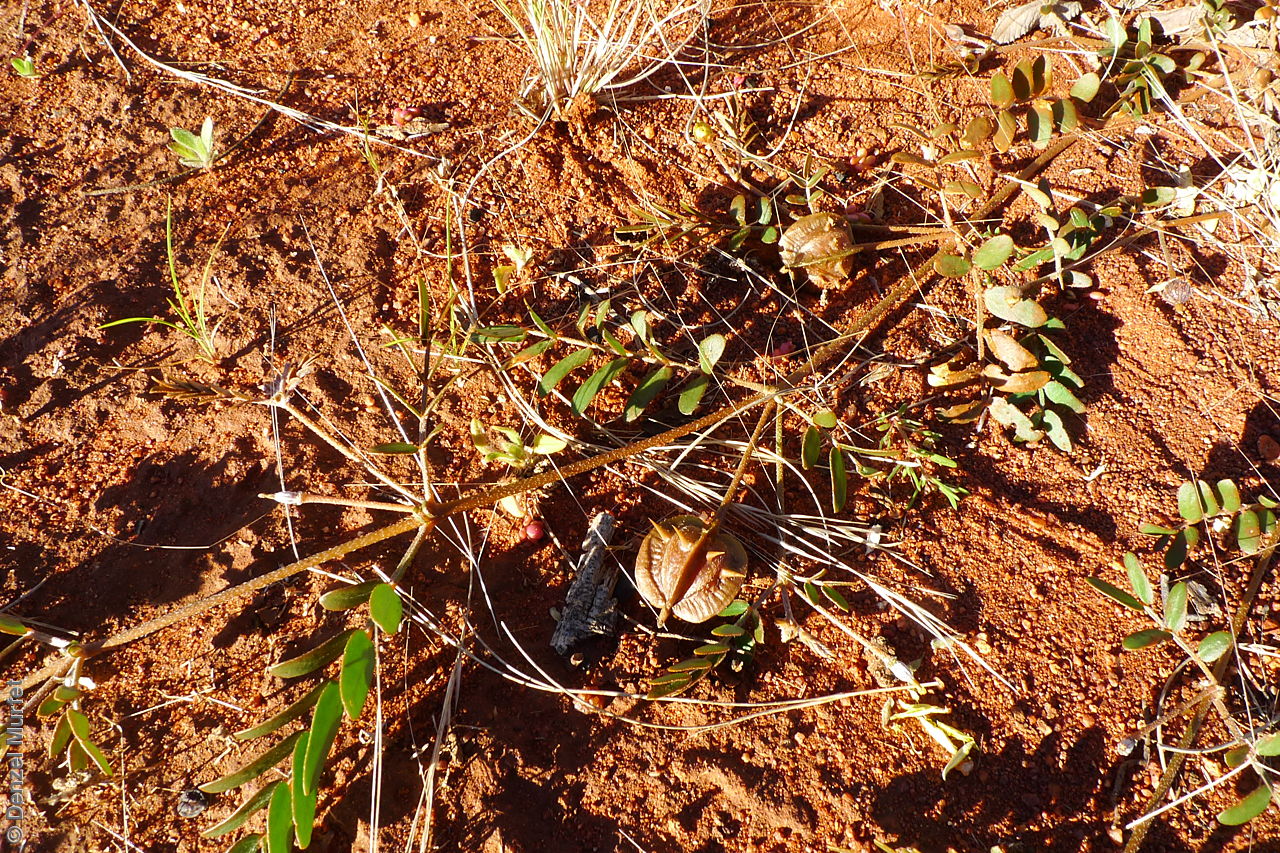
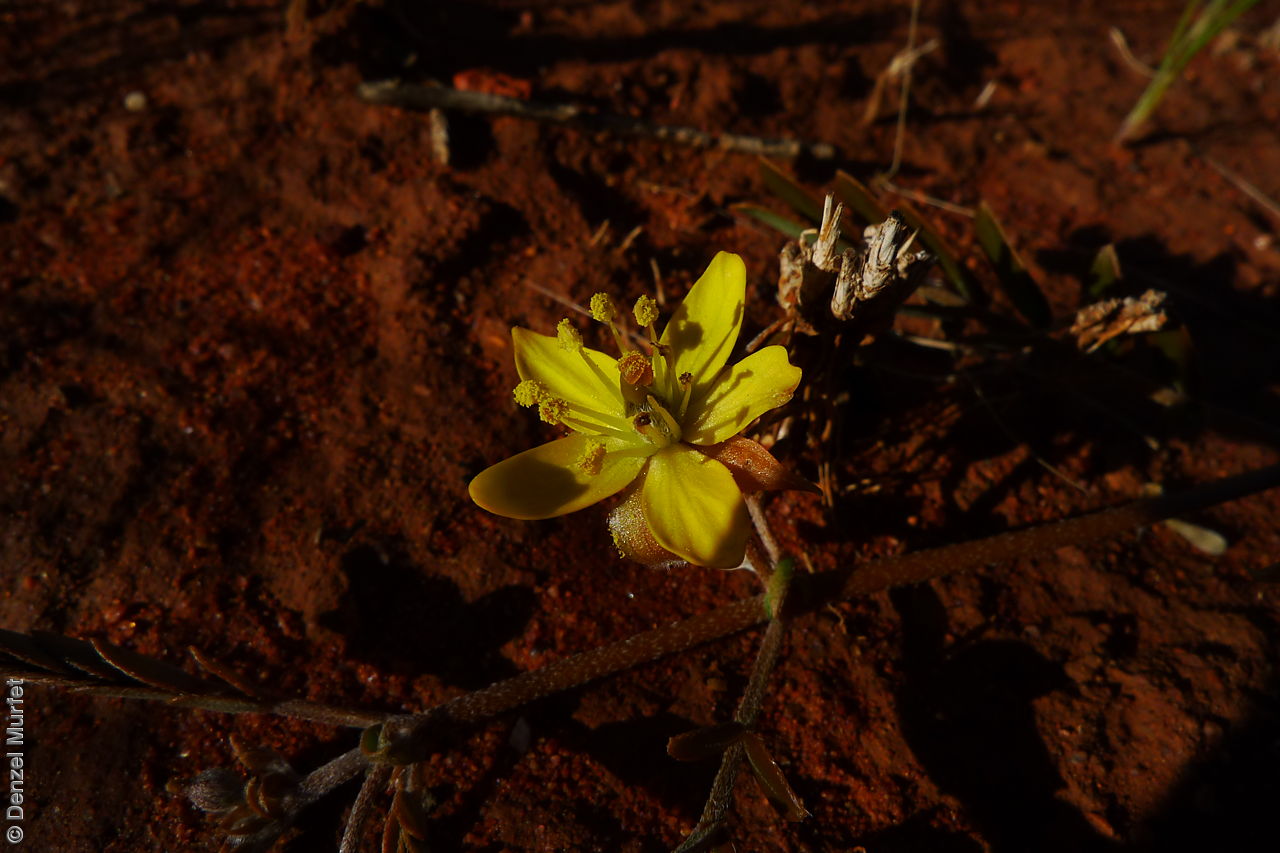
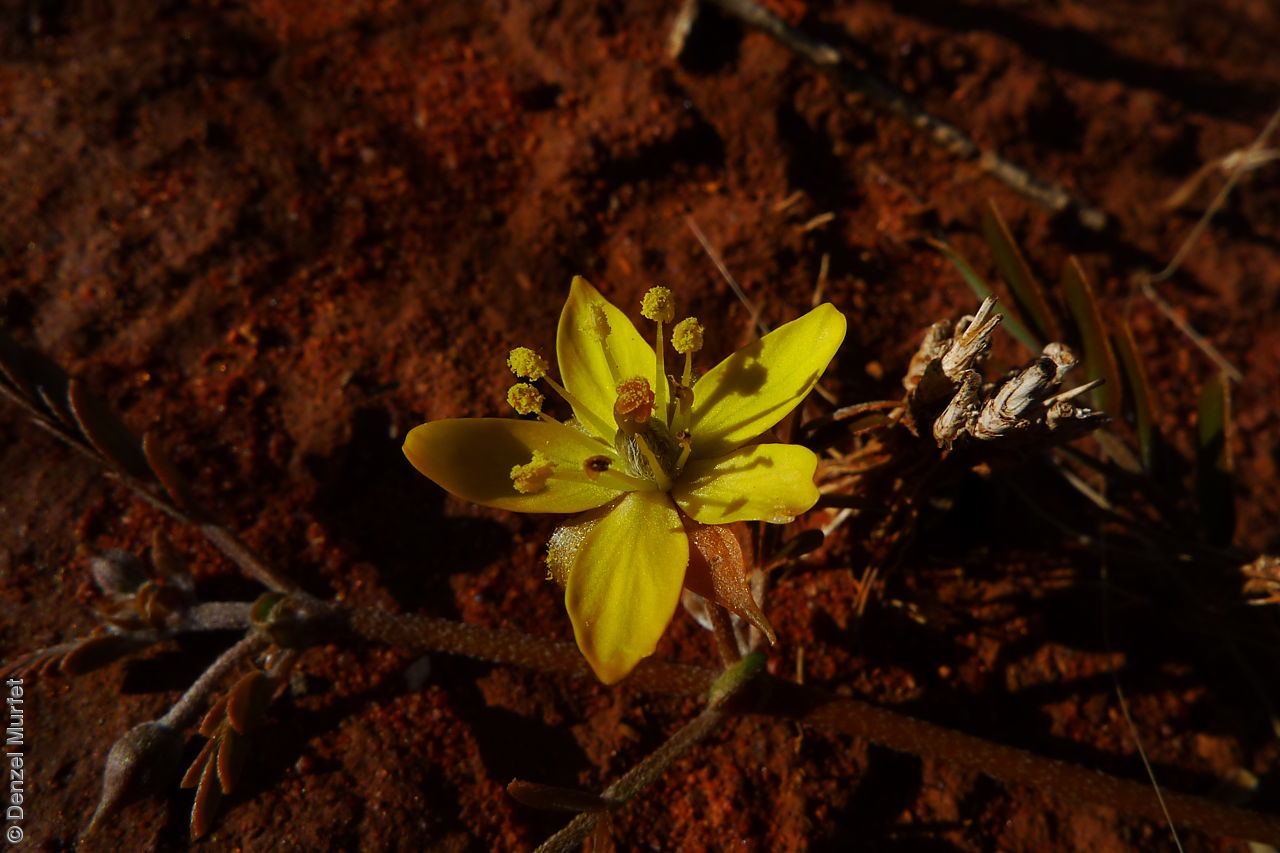
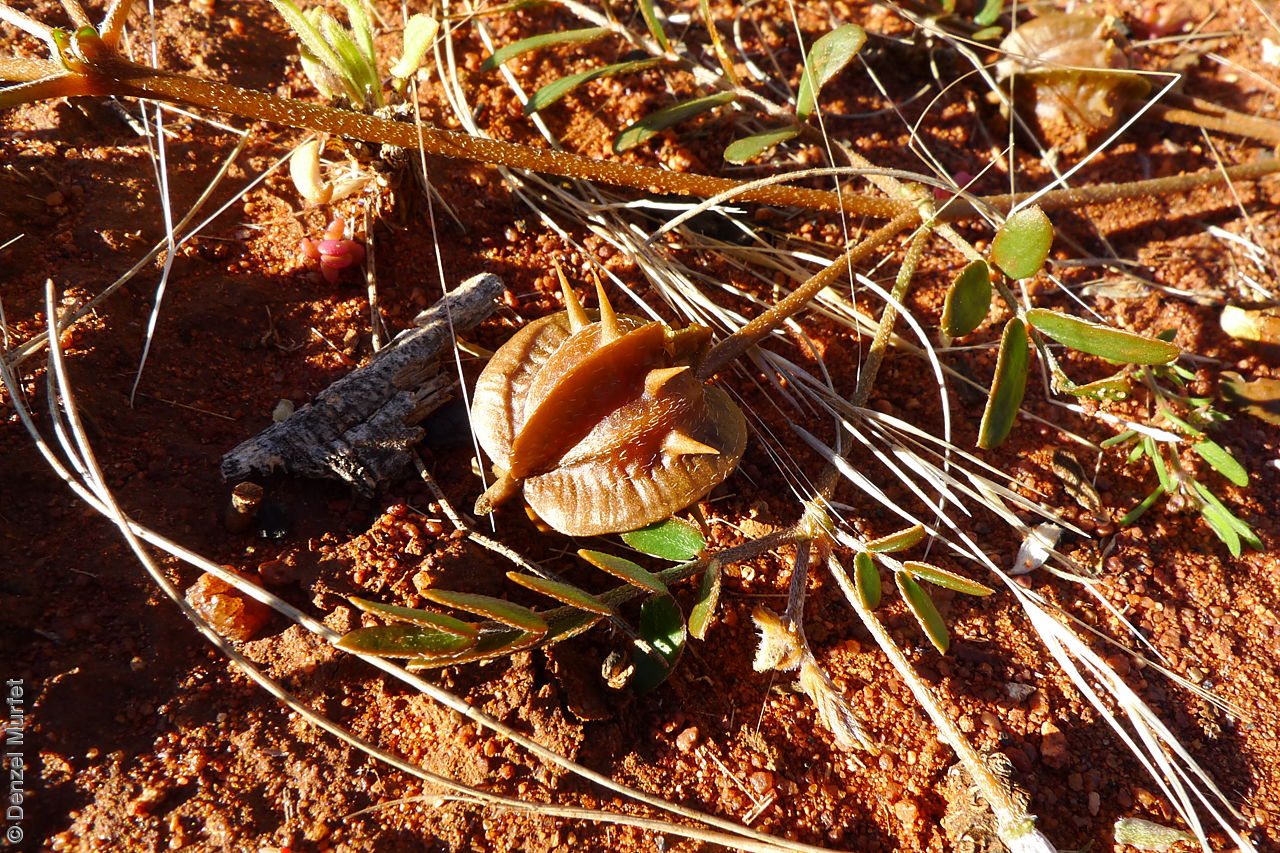
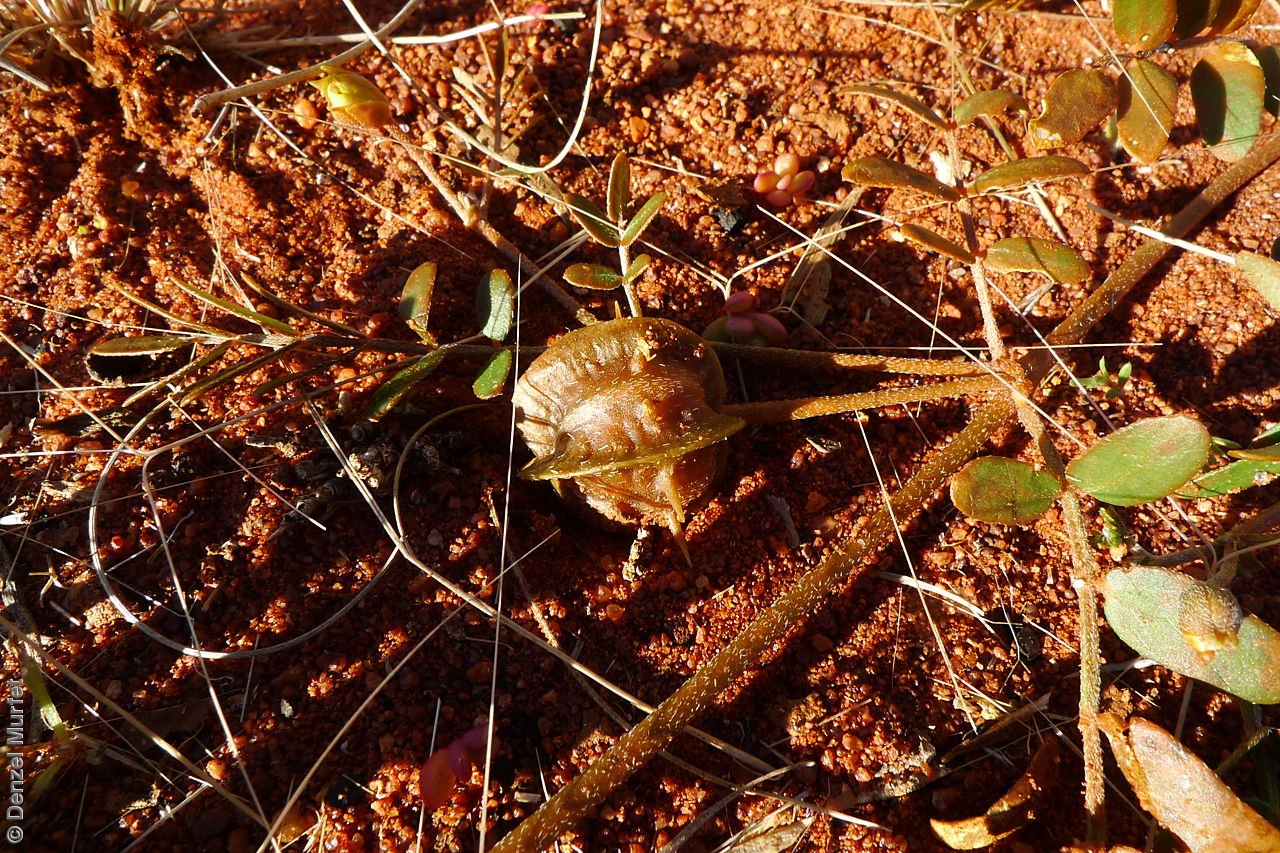


Prior names
Kallstroemia macrocarpa
Common names
Winged-fruit Caltrop
Etymology
Tribulus from the Greek 'tribolos' meaning water-chestnut and translated into Latin as 'tribulos' which originally meant the caltrop, a 4-pointed military instrument, employed to lame advancing cavalry, and the name also applied to Tribulus terrestris. Macrocarpus from the Latin 'macros' meaning large and 'carpos' meaning fruit; referring to its large winged fruit.
Distribution and status
Found in the far north and north-western parts in South Australia, growing on shallow rocky and gravelly soils in hills and ranges and red sandy & loamy in plains, dunes and creeks. Also found in Western Australia and Northern Territory. Native. Rare in South Australia. Common in the other states.
Herbarium regions: North Western, Lake Eyre
AVH map: SA distribution map (external link)
Plant description
Prostrate or ascending hairy annual herb. Leaves alternate, with 5-7 pairs of oblong leaflets to 7 mm long. Inflorescence solitary in axils of leaves with large yellow flowers. Flowering between April and September. Fruits are very large, sparsely hairy fruit to 23 mm long and 20 mm wide, with 5 vertical wings and 2 downward pointing spines between wings. Seed embryo type is spatulate fully developed.
Seed collection and propagation
Collect seeds between July and November. Collect fruits that are hard and turning brown. Some fruits maybe split and laying on the ground. Be careful when collecting as the fruits are spiny. No further cleaning is required if only fruits are collected. Store the seeds with a desiccant such as dried silica beads or dry rice, in an air tight container in a cool and dry place. Seed viability is usually high. This species have physical and physiological dormancies that needs to be overcome for the seed to germinate.